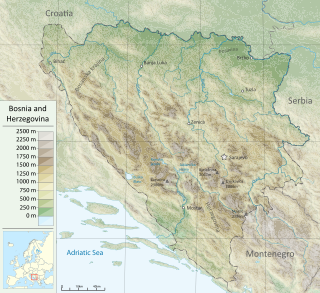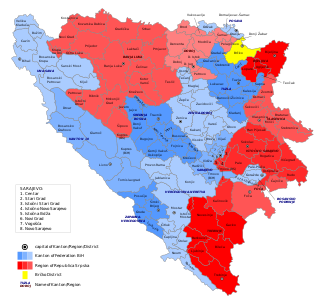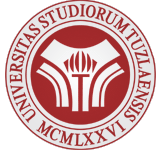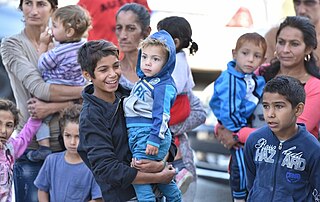See also History of the Jews in Bosnia and Herzegovina
Contents

The Jewish Community of Doboj (Bosnian language: Jevrejska opština u Doboju) is an organization representing the Jewish community in the city of Doboj, Bosnia and Herzegovina.
See also History of the Jews in Bosnia and Herzegovina

The Jewish Community of Doboj (Bosnian language: Jevrejska opština u Doboju) is an organization representing the Jewish community in the city of Doboj, Bosnia and Herzegovina.
The Jewish Community of Doboj was founded in 1871 and still exists to this day. In the 1940s, there were 24 Jewish communities in Bosnia and Herzegovina. Sarajevo, Tuzla and Banja Luka all had both Sephardic and Ashkenazi Jewish communities, while others had one joint community. Today, in addition to the community in Doboj, there are five remaining communities: Sarajevo, Banja Luka, Zenica, Tuzla and Mostar. The Jewish community numbers about 1,100 people. Synagogues exist in Sarajevo, Doboj and Banja Luka, while the construction of a synagogue in Mostar has been suspended due to legal battles over land ownership.
The relationship with the local community briefly soured when Mordechai Atijas, the community's president at that time, proclaimed himself as a "Jewish chetnik" and helped expel Bosnian Muslims from the town. [1]
Many members of the community live in Doboj or in surrounding towns, including Teslić, Šamac and Derventa. The mission of the organization today is to preserve Jewish identity and traditions in Bosnia and Herzegovina, as well as promoting peace, cultural and economic cooperation among all citizens of the country. The Community receives funding from membership fees, the Jewish Social Fund, grants from the government ministries of Republika Srpska, the city of Doboj, and from donations.
In 1997, the Jewish population in Doboj was reported to only be 19 individuals. [2] In 2005, this number rose to 40 people. [3]
The first synagogue in Doboj was built in 1874, but was destroyed in 1942 during the Second World War. Only the entrance door survived the destruction. Today that door stands in the courtyard of the new synagogue as a symbol of remembrance. The current synagogue was consecrated in 2003, with the community using a reconstructed family home from 1922 that originally belonged to Alexander Vrhovsky and Otto Kalamar. The community named the new synagogue "Bet Shalom". The site also includes a Jewish cultural center and the headquarters of the Jewish Community of Doboj. [4] It was inaugurated in 2004. [5]

Bosnia and Herzegovina is located in Southeastern Europe. Situated in the western Balkans, it has a 932 km (579 mi) border with Croatia to the north and southwest, a 357 km (222 mi) border with Serbia to the east, and a 249 km (155 mi) border with Montenegro to the southeast. It borders the Adriatic Sea along its 20 km (12 mi) coastline.

Operation Althea, formally the European Union Force Bosnia and Herzegovina (EUFOR), is a military deployment in Bosnia and Herzegovina to oversee the military implementation of the Dayton Agreement. It is the successor to NATO's SFOR and IFOR. The transition from SFOR to EUFOR was largely a change of name and commanders: 80% of the troops remained in place. It replaced SFOR on 2 December 2004.

Islam is the most widespread religion in Bosnia and Herzegovina. It was introduced to the local population in the 15th and 16th centuries as a result of the Ottoman conquest of Bosnia and Herzegovina.

In Bosnia and Herzegovina, the smallest administrative unit is the municipality. Prior to the 1992–95 Bosnian War there were 109 municipalities in what was then Socialist Republic of Bosnia and Herzegovina. Ten of these formed the area of the capital Sarajevo.

The University of Banja Luka is the second-oldest university in Bosnia and Herzegovina. A public university, it is the flagship institution of higher education in Republika Srpska, one of two entities of Bosnia and Herzegovina. As of 2018–19 school year, there are 11,186 enrolled students.

The Jewish people of Bosnia and Herzegovina are one of the minority peoples of Bosnia and Herzegovina, according to country's constitution. The history of Jews in Bosnia and Herzegovina spans from the arrival of the first Bosnian Jews as a result of the Spanish Inquisition to the survival of the Bosnian Jews through the Holocaust and the Yugoslav Wars. Judaism and the Jewish community in Bosnia and Herzegovina have one of the oldest and most diverse histories of all the former Yugoslav states, and is more than 500 years old, in terms of permanent settlement. Then a self-governing province of the Ottoman Empire, Bosnia was one of the few territories in Europe that welcomed Jews after their expulsion from Spain.

Sarajevo Synagogue is Sarajevo's primary and largest synagogue and is located on the south bank of the river Miljacka. It was constructed in 1902 and remains the only functioning synagogue in Sarajevo today.

University of Tuzla is a public university located in Tuzla, Bosnia and Herzegovina. The university was founded in 1958. It became a proper university in 1976, and today is one of the major institutions of higher learning in Bosnia and Herzegovina.

The country calling code of Bosnia and Herzegovina is +387.

The Xoraxane in Bosnia and Herzegovina are the largest of the 17 national minorities in the country, although—due to the stigma attached to the label—this is often not reflected in statistics and censuses.

Macedonians in Bosnia and Herzegovina refers to the group of ethnic Macedonians who reside in Bosnia and Herzegovina.
La Benevolencija is a Jewish humanitarian organization based in Sarajevo, Bosnia and Herzegovina. During the Siege of Sarajevo in the 1990s, the organization provided medical aid, food rations and educational services for the people trapped in the city.
Big Radio 2 is a Bosnian commercial radio station, broadcasting from Banja Luka.